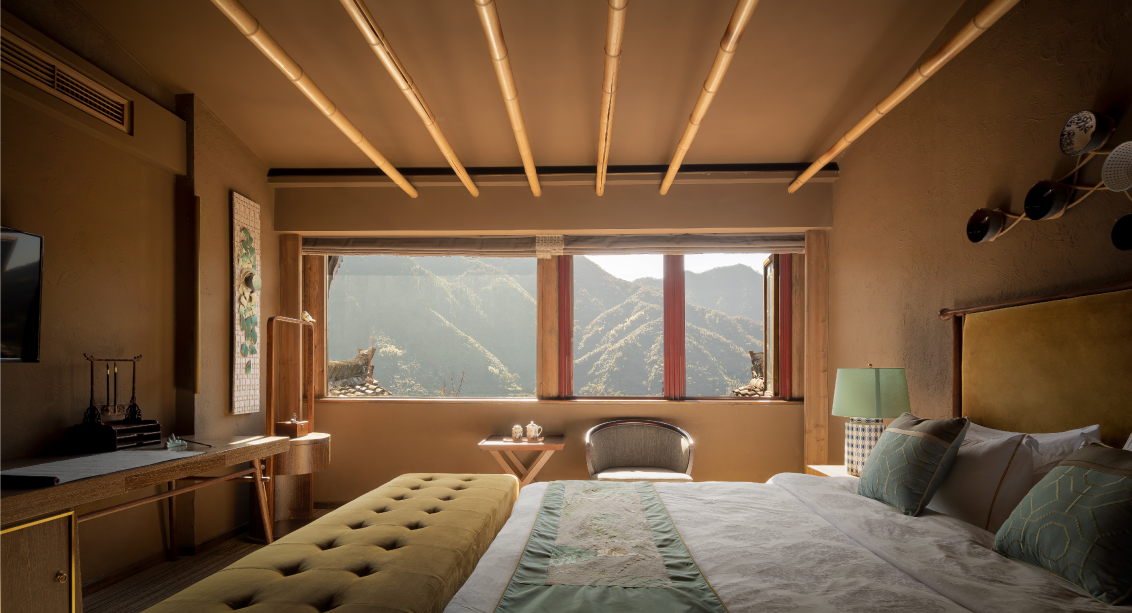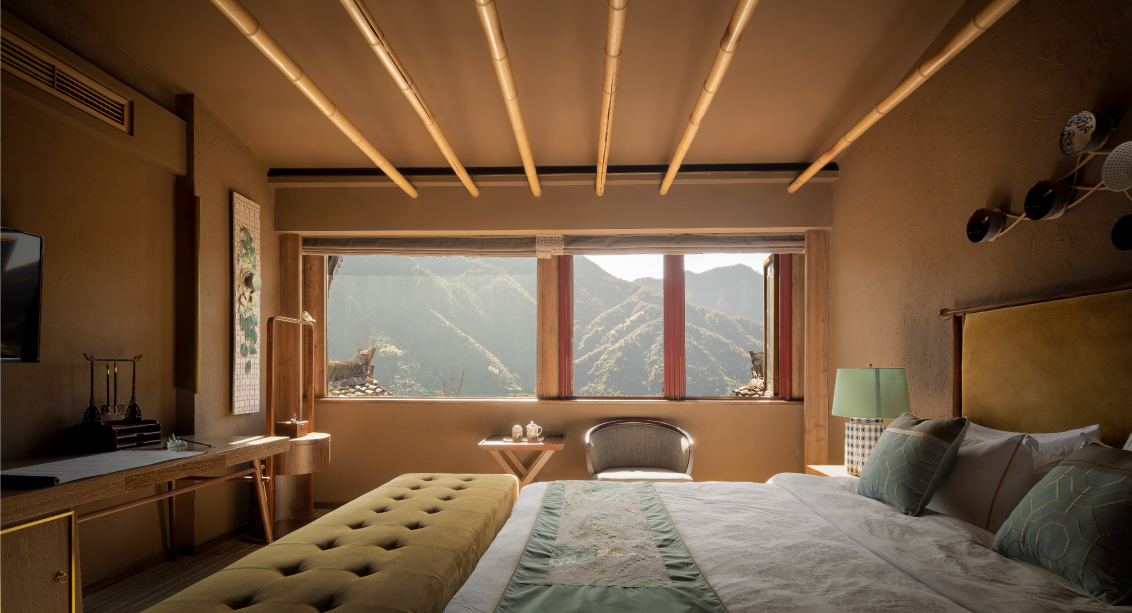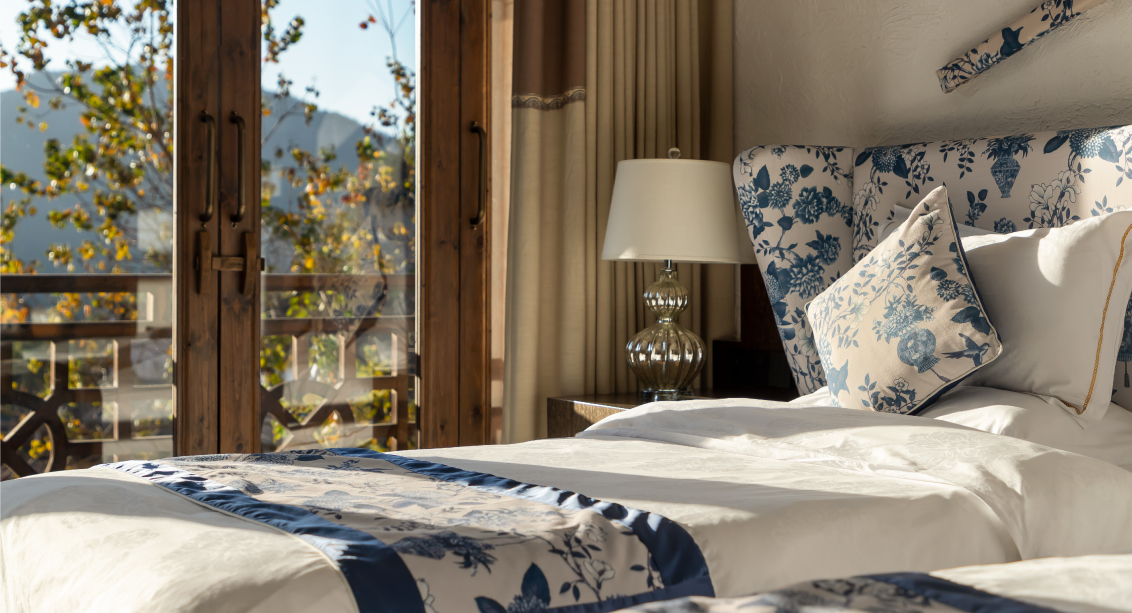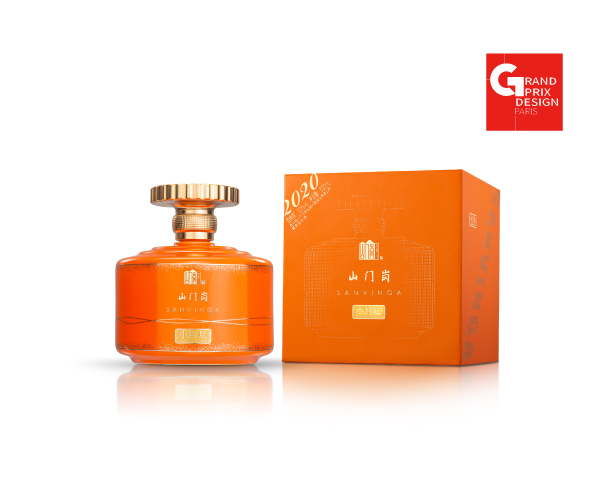江西婺源-篁岭晒秋美宿
杭州矩创装饰工程有限公司
2022-02-02
江西婺源-篁岭晒秋美宿

Located in Huangling Scenic Area in Wuyuan county, Jiangxi Province, this project is far away any human habitation and boasts splendid scenery. Huangling Village, over 500 years old, was established in the Middle Ming Dynasty, and its local architecture featured the traditional Hui style, plain yet solemn. The overall appearance of the village is dominated by a color scheme of gray and white, contrasting with the green characterizing the terrace. The change of the sky and seasons lends exterior walls different colors, rendering the overall ambience as secluded and profound as a dreamland. Additionally, rooftops have become the major venue where locals dry their crops, as Huangling lies on the mountains with few flats. Each household makes adjustment to the natural terrain by putting up drying racks on the top floor. At this time of the year, undulating rooftops of Huangling Village transform into a canvas, turning the village into a varicolored landscape in a picturesque disorder. The locals name the scene of sun-drying crops “shaiqiu”, a time-honored practice prevalent in many Chinese villages during harvest time in autumn. Having had paid a visit to Huangling Village, recorded in great detail and summarized the abovementioned characteristics, a design team, centering on the topic of “shaiqiu”, tailored a construction scheme of minshuku to the village. Hence the origin of this project, Huangling Shaiqiu Meisu Hotel.
The first five sets of houses are all post-built, its shape, structure and choice of materials retaining the simplicity, naturalness and austerity of the region so as to tally with the harmonious co-existence of the local village with nature. The instant visitors push open the door and step into the room, they can sense visually the sharp contrast between the slightly rough, plain materials and the exquisite, elaborate interior collocation. Based on Hui-style notion of “nestled on the mountains comes strength, naturalness and felicity”, the design team incorporated into it the aesthetic concept of “wabi-sabi” originating from constructions featuring Japanese Yamato Culture, namely, harmony, simplicity, tranquility, naturalness and appreciation of beauty in imperfection. The wabi-sabi aesthetics holds that everything in the world has its own cycle of birth, ageing, sickness and death. Only when one thing is imperfect do its form of existence and meaning remain “natural”, “complete” and admirable. In this project, the concept is reflected by the revelation of its rustic yet still-in-vogue aura, rough texture, exquisite details, and the natural landscape created artificially. It is exactly due to its imperfection in each and every facet that it’s complete and beautiful in its own cycle of birth, ageing, sickness and death. In terms of the interior layout, the design team incorporated substantially time-honored local history and traditional culture into it, such as the woven cloths draped over the bed, wooden decorations hanging by the windows, the bamboo crafts adorning the walls, etc. In this way, both contemporary and ancient notions collide with each other within such tiny rooms, the traditional aesthetics integrates with overseas thinking, and the construction situated in the deep mountains displays a special kind of vitality and fashion.
获奖链接:
















